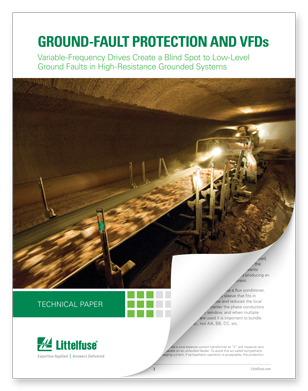Variable-Frequency Drives Create a Blind Spot to Low-Level Ground Faults in High-Resistance Grounded Systems
Death and injuries make ground (earth) faults one of the most essential hazards to mitigate. High-resistance grounding provides significant protection for equipment and personnel.
Unfortunately, however, when variable frequency drives (VFDs) are used in resistance-grounded systems, the system may not be able to effectively detect low-level ground faults unless the equipment is adjusted accordingly. Shorts to ground in a solidly grounded system create large currents that can damage equipment and require the system to be shut down, which is not only inconvenient, but can be expensive as well. If left undetected, ground faults present significant electrical shock and arc-flash hazards. Ground faults are especially problematic in applications that use high-powered or portable equipment in a harsh environment, such as underground mines.
While VFDs can make it difficult for older high-resistance grounded systems to monitor ground faults, modern ground-fault relays have features that eliminate these problems, and lead to safer and more reliable electrical systems.
This paper explains why using VFDs in high-resistance grounding systems can be problematic, and provides an in-depth discussion of how they can be overcome.


